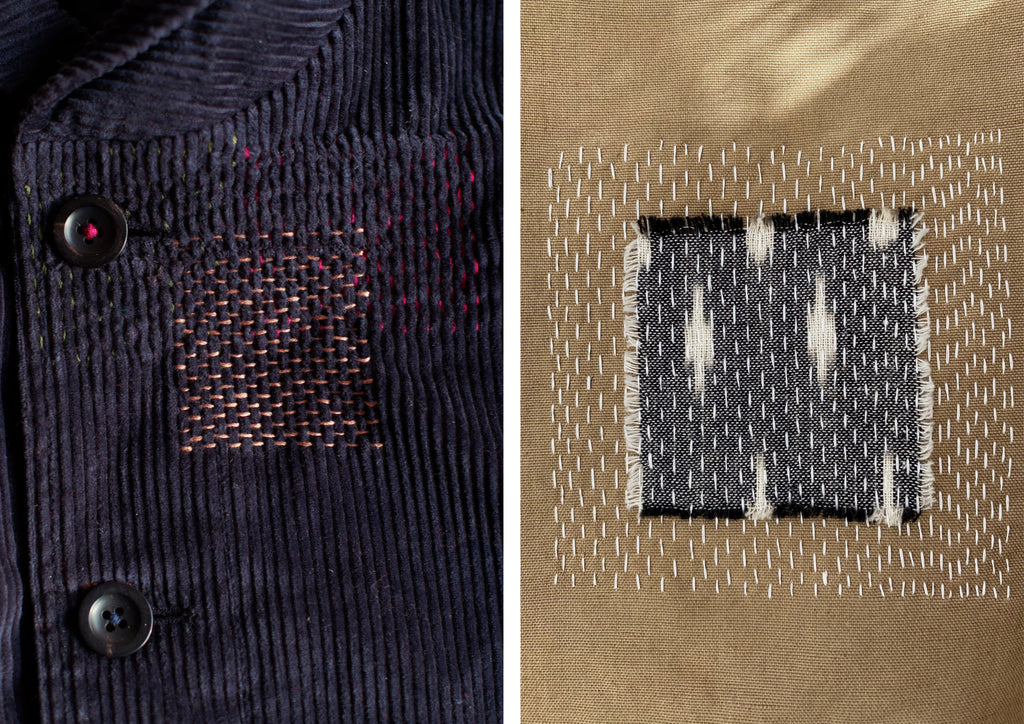
At TOAST, we celebrate the beauty of imperfections. We have a long-standing tradition of honouring the hands that make our pieces, and see the act of mending as something that can bring a new lease of life to much-loved items.
Our new initiative, TOAST Renewed, features garments that have been artfully repaired by our in-house team of six repair specialists. As well as working on repairing your items as part of our free mending service, TOAST Repair, they will now be finding ways to repurpose damaged items from our shops and those returned by customers to our warehouse. In this way, we hope to reduce waste, and inspire you to discover and promote the art of mending.
The team uses an array of techniques to extend the lifespan of the items they are working on. Below, we share some information about the time-honoured methods they have mastered.

Appliqué
Appliqué – from the French “appliquer” and Latin “applicare”, “to attach” – is a needlework technique in which a patch of fabric is overlaid and sewn over another piece of fabric or garment. It is often used for decoration as well as repair but was initially used to strengthen worn areas of garments.
The technique has been used in numerous cultures all over the world; appliquéd leather from ancient Egypt dating to 980 BCE has been uncovered by archeologists. It’s been considered an important art form in Benin, West Africa, since the 18th century, and is intrinsic to folk traditions across Scandinavia, Russia, Eastern Europe, Pakistan and Morocco.
Reverse Appliqué
Reverse appliqué, where a patch is applied to the underside of the garment, is used on the Mola textiles, which are part of the traditional women's clothing of the indigenous Guna people from Panamá and Colombia. The attached materials are sewn together, then the top layer is cut away before being sewn down at the edges.

Darning
Darning is a needlework sewing technique for repairing holes or worn areas, whether on woven or knitted fabrics. It is created using the darning stitch, which is a running stitch where the thread is “woven” in rows along the grain of the fabric. The stitches are reversed at the end of each row, filling in the framework and creating a woven structure. It’s often used for fixing socks, where patching would be uncomfortable. Darning is known as rafoogari in India and neighbouring countries, where it is used to restore cherished items made from fine materials such as featherweight silks and cottons.

Swiss Darning
Swiss darning is an intricate technique that replicates the original knit stitches that have become loose or undone. The embroidery is created by following the yarn row by row, creating stitches on top of the knitted fabric, echoing the original form. It can be used to create highly decorative patterns, as well as to subtly mend a garment.


Sashiko
Sashiko, which translates from the Japanese as ‘little stabs’ is a form of repair which traces back to the Edo period, and refers to small, decorative embroidery used to reinforce the material. Commonly applied on worn areas such as elbows and cuffs, the traditional stitchwork was traditionally white thread on indigo fabric. Today, a variety of colours are used to contrast with the material. The resulting visible mend is an artful running stitch in one or more sections of the fabric, like small artworks on a canvas.
Learn more about our TOAST Circle initiatives, which include Renewed, our collection of one-of-a-kind creatively repaired items, and Repair, our free mending service.
Add a comment
15 comments